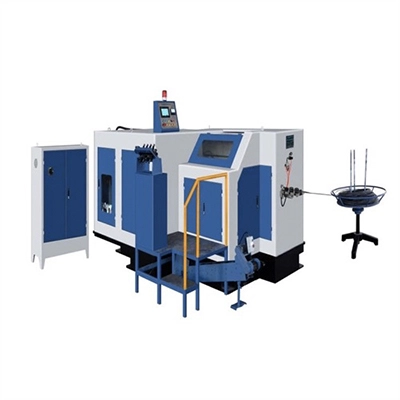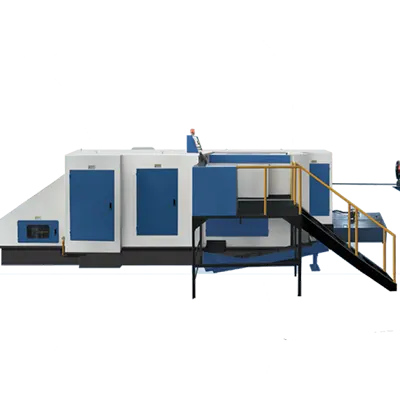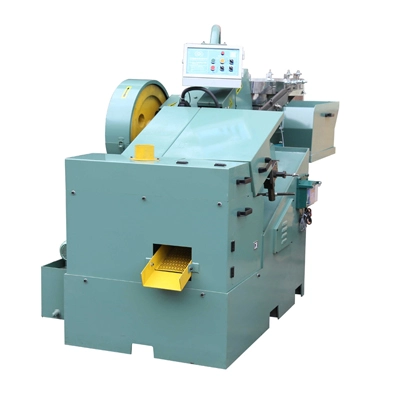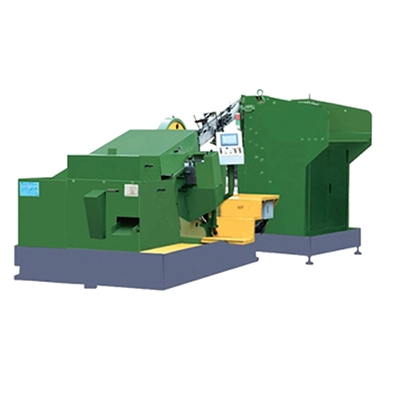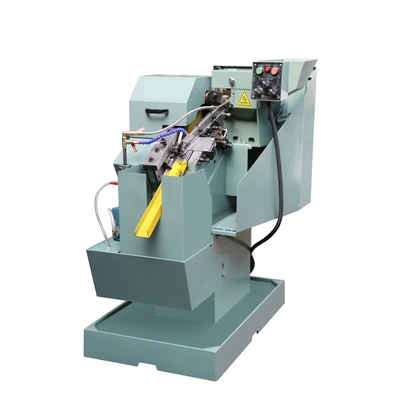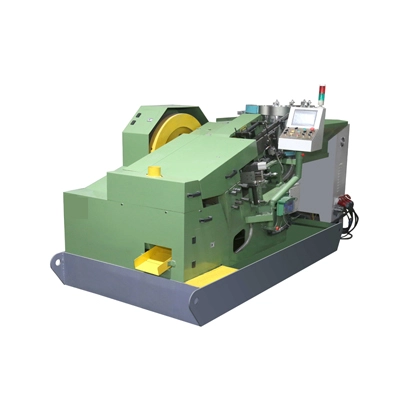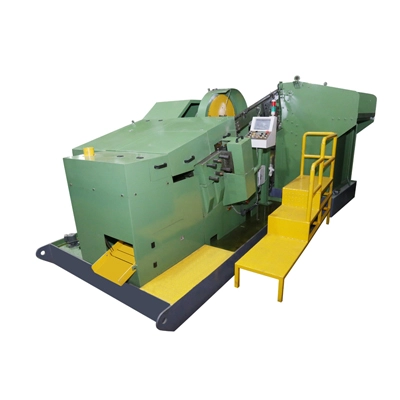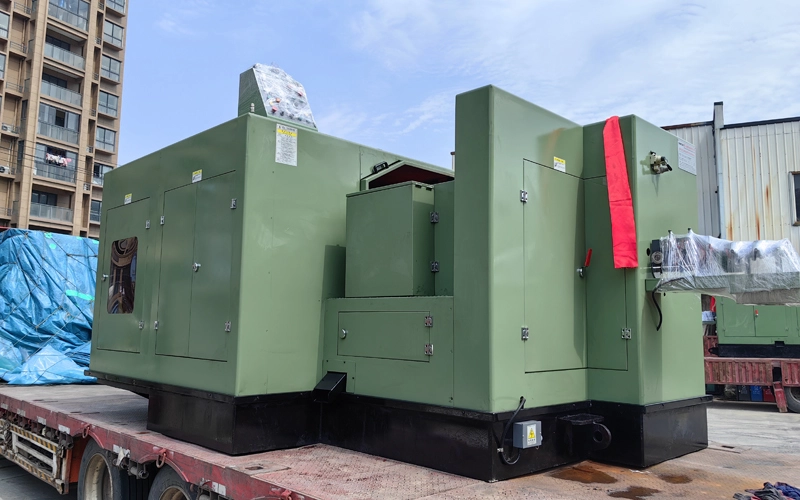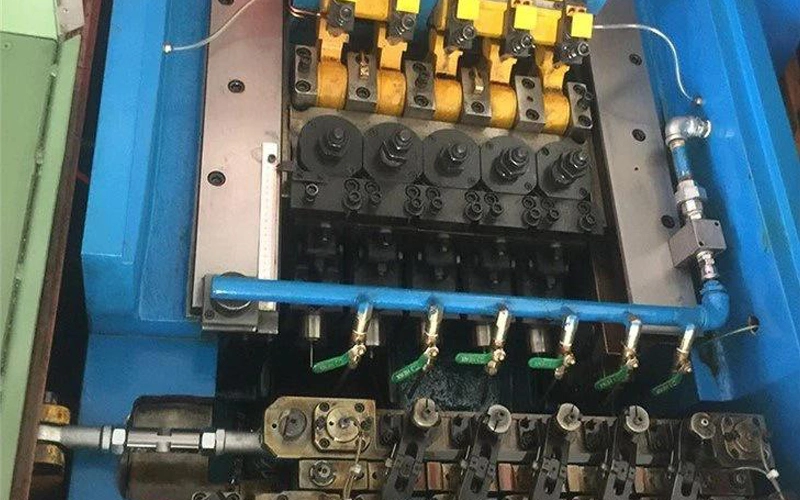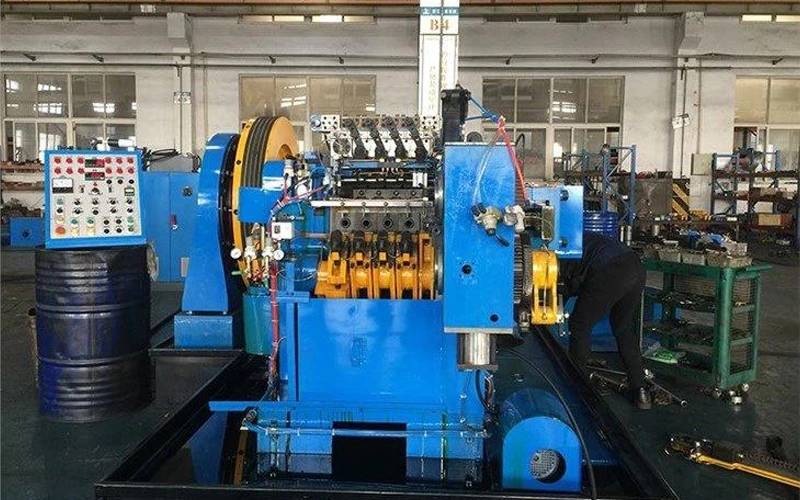The crankshaft and body of the cold forging equipment, as well as the connection of the impact connecting rod, adopt high-wear-resistant alloy copper tile connections, offering high load capacity, long service life, and low maintenance cost.
The body of the cold forging equipment is cast with added alloy ductile iron, featuring high tensile strength and good wear resistance.
The cold forging equipment uses a two-stage gear transmission system, with high transmission efficiency and large transmission torque.
The cold forging equipment is equipped with a pneumatic clutch brake, reducing motor power consumption.
The cutting system of the cold forging equipment adopts a guide plate-driven cutter rod. The guide plate reciprocates, the cutting force is linearly transmitted, with high stability and good dynamic balance.
The multi-station cold forging equipment uses clamp-type workpiece transport, where the clamp system can rotate or translate, facilitating forming process arrangements.
The cold forging equipment is equipped with a variable frequency speed control device, allowing stepless speed regulation within a certain range.
The cold forging equipment is equipped with a fault detector and safety protection device. In case of equipment failure, it automatically stops to provide optimal protection for the equipment and tooling.
The feeding box of the cold forging equipment is equipped with a thrust device to improve feeding accuracy.
The lubrication system of the cold forging equipment features a simple and efficient oil circuit design, providing effective protection for punches and workpieces while ensuring cyclical filtration.
Why Choose Shinetop's Multi Station Cold Forging Machine?
Shinetop's multi station cold forging machine excels in production efficiency. With its cutting-edge technical design, the multi station cold forging machine offers high-speed, high-volume production with excellent precision. Moreover, Shinetop's multi station cold forging machine ensures optimal performance and durability, significantly reducing material waste and costs. Shinetop's multi station cold forging machine incorporates real-time monitoring and statistics to control the consistency of the cold forging equipment's quality. All machines undergo rigorous testing and calibration, meeting the highest industry standards. Choosing Shinetop's multi station cold forging machine brings you efficient, reliable, and innovative manufacturing.
 Thread Cold Rolling Machine
ST-4R-50 High-Speed Thread Rolling Machine ST-8R-83(120) High-Speed Thread Rolling Machine ST-6R-80 High-Speed Thread Rolling Machine ST-4A-50 High-Speed Thread Rolling Machine ST-4A-25 High-Speed Thread Rolling Machine ST-10N-150 High-Speed Thread Rolling Machine ST-30N High-Speed Thread Rolling Machine ST-60N(M16-150) High-Speed Thread Rolling Machine ST-60N(M16-200) High-Speed Thread Rolling Machine ST-12N-150 High-Speed Thread Rolling Machine ST-3A-25 High-Speed Thread Rolling Machine ST-3 High-Speed Thread Rolling Machine ST-80N High-Speed Thread Rolling Machine ST-90S High-Speed Thread Rolling Machine ST-100-M40 High-Speed Thread Rolling Machine ST-70N End Milling Machine
Thread Cold Rolling Machine
ST-4R-50 High-Speed Thread Rolling Machine ST-8R-83(120) High-Speed Thread Rolling Machine ST-6R-80 High-Speed Thread Rolling Machine ST-4A-50 High-Speed Thread Rolling Machine ST-4A-25 High-Speed Thread Rolling Machine ST-10N-150 High-Speed Thread Rolling Machine ST-30N High-Speed Thread Rolling Machine ST-60N(M16-150) High-Speed Thread Rolling Machine ST-60N(M16-200) High-Speed Thread Rolling Machine ST-12N-150 High-Speed Thread Rolling Machine ST-3A-25 High-Speed Thread Rolling Machine ST-3 High-Speed Thread Rolling Machine ST-80N High-Speed Thread Rolling Machine ST-90S High-Speed Thread Rolling Machine ST-100-M40 High-Speed Thread Rolling Machine ST-70N End Milling Machine English
English 中文
中文
